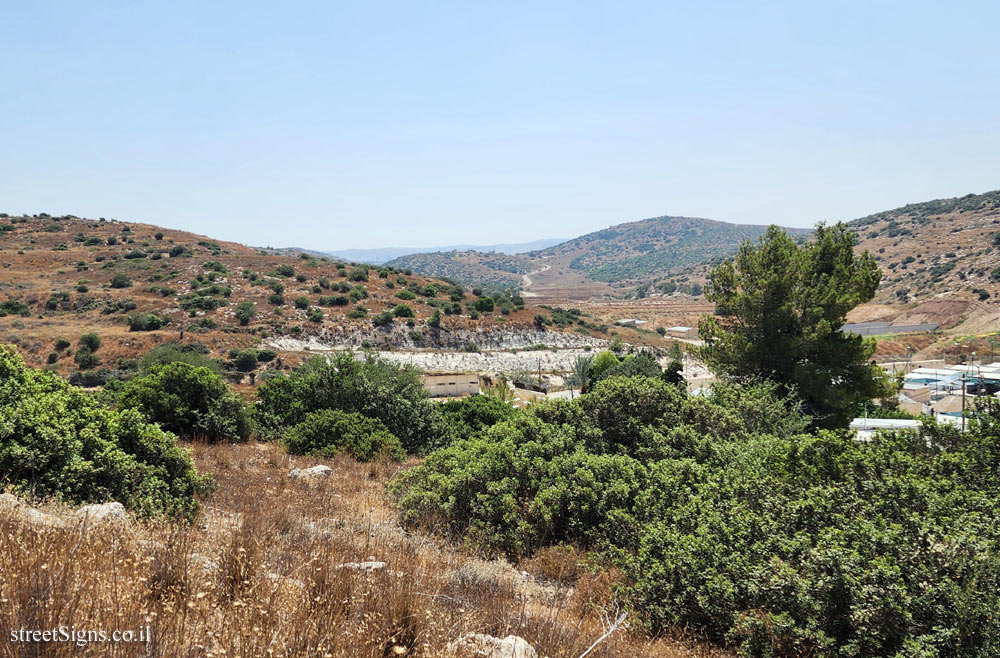The area where the sign is located with a view of Mount Hebron was photographed on the same day by the same photographer
 Click for a larger image
Click for a larger image The location is approximate since no geographic information was attached to the image.
Translation of the text on the sign:
[Israel Defense Forces Symbol]
[Symbol of the Midrasha of the South]
The land of a thousand caves Hundreds of caves were found in the Judean Lowlands. The reason for this lies in the type of rock.
The most common rock in the area is the kirton rock. The kirton rock is a very soft white rock that is easy to quarry. When the inhabitants of the area were discovered in ancient times, they began to use the rock extensively for a variety of uses - building houses, industrial facilities, water reservoirs, fortifications and hiding caves to prepare for war. When we touch the limestone it crumbles in our hands into a kind of white powder and it is easy to compare it to flour. The chalk rock was formed in the depths of the sea (the ancient Tethys Ocean) and we see it in nature in straight, usually horizontal neighborhoods.
In the lowlands we encounter the Kirton rock in a slightly different way. He wears an upper layer called a Caliche. Calicheis is the Kirton rock that has hardened very much due to its exposure to the sun and is difficult to quarry.
The depth of the caliche layer is between one meter and five meters. The fire causes difficulty in quarrying up to the kirton layer, but man found a solution for this too and created the ’bell cave’ method - cutting a narrow hole in the fire and as soon as you reach the kirton you start carving on the sides as well, creating a huge and impressive pit.
The caves were carved because they needed building stones and suitable places for food storage, water storage, industrial buildings (in our area - oil mills) and of course also for residences.
In many periods (mainly before the destruction of the Second Temple) the caves were used for living, hiding and hiding from the authorities, and therefore we recognize many hiding caves which are characterized by narrow passages between the cave spaces. Living in a cave brings with it advantages and challenges. The man living in the cave enjoys constant shade inside his home, with a certain security and coolness that is only possible underground. But on the other hand, living in a cave does not allow you to anticipate the danger in the long term, you are not aware of the danger and even worse if the enemy discovered the entrance or exit, the hiding cave has actually become a trap for you.

 Click for a larger image
Click for a larger image